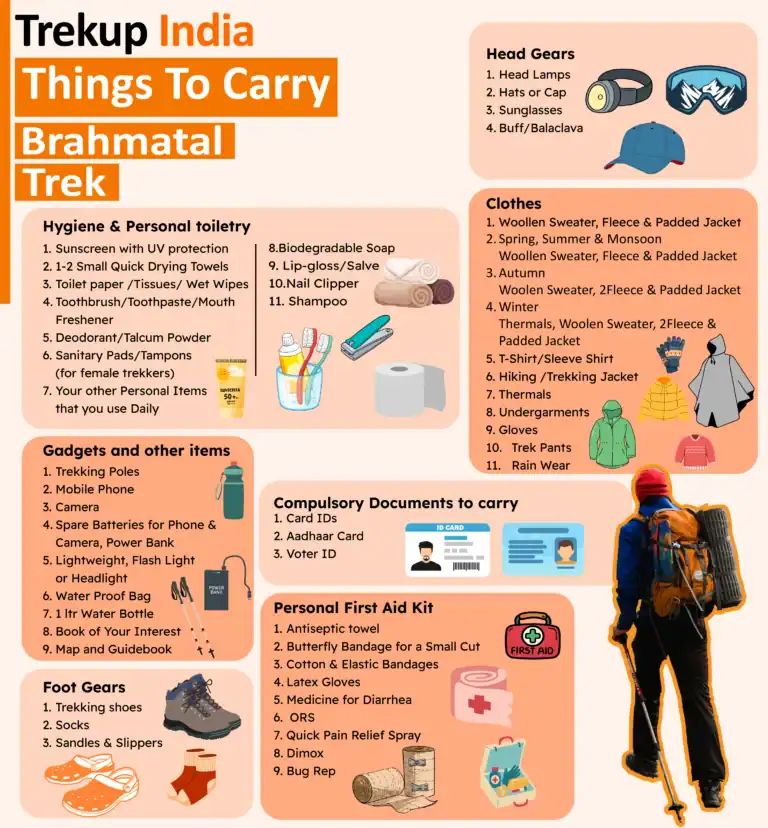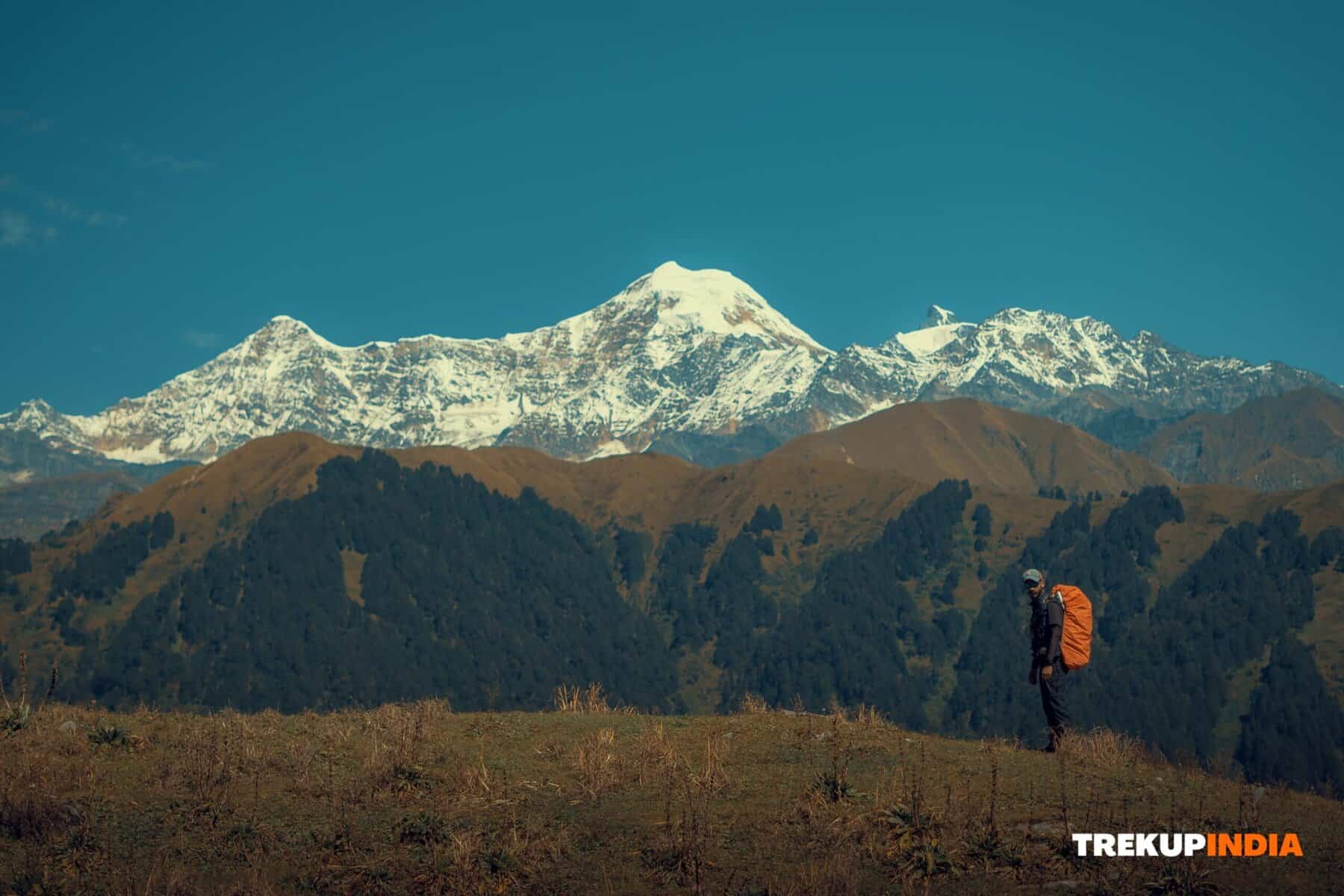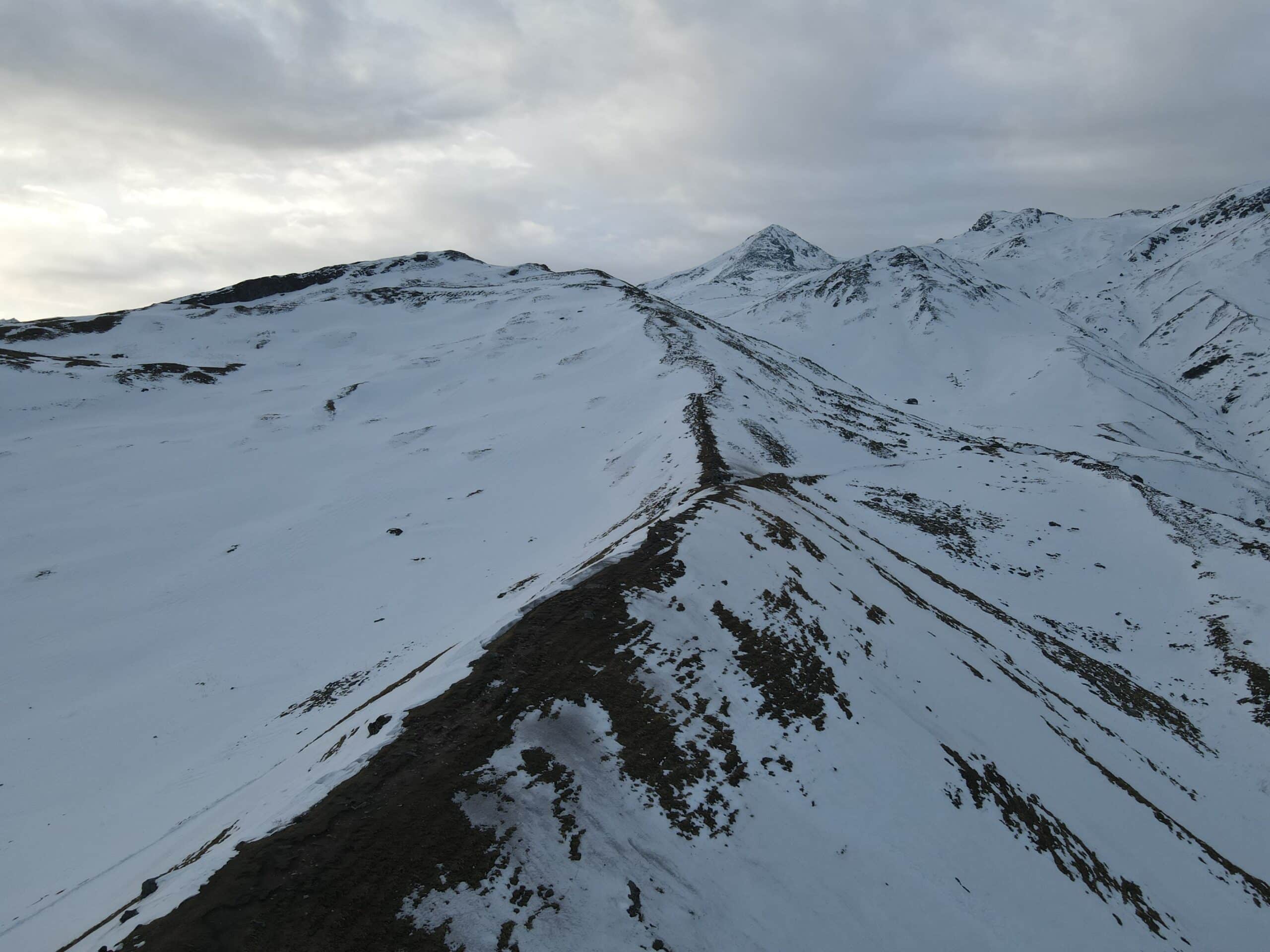Trek Grade
Easy - Moderate
Highest Altitude
12,557 ft
Base Camp
Lohajung
Best Time
April - June / Sept - Nov
Trek Distance
29 Km
Not sure which trek is right for you? Trekup India’s Mountain Experts have you covered.
Not sure which trek is right for you? Trekup India’s Mountain Experts have you covered. From figuring out if a trek matches your fitness level to knowing who you’ll be trekking with, we’re here to answer all your questions. Reach out to our Mountain Experts and plan your trek with confidence.
Brahmatal Trek
Brahmatal Trek is a celestial lake located 3,444 meters above sea level, hidden in the Himalayan meadows. The summit of Brahmatal Trek is at 3,718 meters. During winter, from December to March, Brahmatal Lake is entirely frozen. All trekking routes to Brahmatal have snow-covered trails, and the summit crown of Brahmatal is snow-capped. Trekkers can easily reach the snow-covered peak of Brahmatal without difficulty.
During the trek, you may encounter a variety of wildlife, including Barasingha and Himalayan foxes, White bear, Himalayan wild goat (Black & white), Ibex/Thar, as well as Himalayan wild goat (Black & White), Ibex/Thar, which licks the mountain slopes to disperse medicinal juice of Shilajeet, Katukki… Monal, an effervescent Bird in Uttarakhand, welcomes you into the mountains with feathers in a rainbow palette. These encounters with nature’s wonders make the trek even more memorable.
Since the beginning of time, Lord Brahma has considered Brahmatal his abode for meditation. Brahmatal confirms the form of Brahmkamal, the primordial flower in the Himalayan region of Uttarakhand. Brahmatal is located in Chamoli Garhwal. The Brahmatal Lake is surrounded by Deodar, Rhododendron, Thuner (Taxus Baccata), Khorsu, etc., ensuring that there is always enough oxygen.
Summer is also a great time to stroll through this beautiful valley, with its lush green vegetation. At this time of year, animals venture to the plateau to graze on the Himalayan wet grassland. The elusive land of Brahmatal is a place where every traveller feels a close connection to other famous Himalayan summits throughout the year. Upper Kunji’s meadow is a great alternative grazing area for brave farmer travellers. Upper Kuji remains a hidden treasure trove of Himalayan serenity for trekkers and locals alike.
Brahmatal, a lake tucked away in the deepest parts of Brahmatal, is steeped in the mythos Uttarakhand Himalayas. Brahmatal is a rare Himalayan destination that can be reached by trekking in December, January and February. The landscapes change from dark and shadowy oak forests and rhododendrons to snow-covered meadows, lakeside camping near Bekaltal, and spectacular high peaks glimmering against a brilliant sky. What sets this trek apart is the rare opportunity to view colossal ice-capped peaks such as Mt. Nanda Ghunti, which are rarely found on other treks. Mt. Trishul, a low-lying trek, can also be viewed from here, adding to the trek’s unique appeal.
The gradual ascent of rolling hills, the steep slopes, and the thrill of the unknown are what make the Brahmatal Trek so exciting. This route is suitable for both beginners and experienced trekkers, offering a unique adventure in the heart of the Himalayas. The trek is mainly under forest cover, which reduces the risk of altitude sickness. It will provide you with a thrilling winter experience, with the sweet, mellow sound of falling snow, a fantastic trail, and the silence of the oaks and rhododendrons. This trek is a perfect choice for shutterbugs, as it offers diverse frames such as snow-laden forests, white-gold high peaks in Alpenglow, and an alpine mountainscape of a single tree perched on the icy shores of the Brahmatal Lake.
Brahmatal Trek offers breathtaking views of mountain ranges such as Chaukhambha, Deoriatal Chandrashila, Bandarpoonch, and Dayara Bugyal, making it one of the best treks in the Himalayas. The view of the white wall of the Trishul massif on the second day of the trek is unbeatable. As you climb the ridge towards Jhandi Top, these views are closer. From Jhandi Top, you get a central view of the mountain range, with Mt Trishul to your left and Mt Nanda Ghunti to your right. The Ronti Saddle, which connects Mt Trishul to Mt Nanda Ghunti, is also visible from here.
As you trek, the majestic Mt Trishul and Mt Nanda Ghunti guide your path, and their towering presence is a constant reminder of the awe-inspiring nature of the Himalayas. The trek’s highest point can be accessed from the side facing either of these giants, adding to the sense of adventure and wonder. This trek is truly a gem among the top treks, offering stunning mountain views that will leave you breathless.
Trek Cost
-
Twin-Sharing Tent Accommodation Provided
-
Pickup from Natraj Chowk – Rishikesh at 6.30 A.M & will drop at same location by 7 P.M
-
+₹1600 Extra For Transport
Fix Departure Dates!
Trek Cost Inclusions and Exclusions!
Trek Cost Inclusions
- Stay: 2 Nights will be in a hotel or guest house on a multi-sharing basis, and 3 Nights of tented accommodation at individual campsites of Trekup India on twin sharing.
- Meals: Trekup India will provide freshly cooked meals during the trek starting with Dinner on Day 1 to tea, coffee on day 6 (Meals are simple, nutritious, and vegetarian)
- Transport Optional: Rishikesh to Rishikesh and return. ( 1600 extra )
- Trek Insurance Mandatory: (Trekup India recommends each trekker to get insurance) you can read more about What Is Trek Insurance, Why It Is Mandatory On Treks And What It Covers .
- Trek Equipment: Sleeping bag, Sleeping tents, Kitchen tent, Dining tent, Toilet Tent.
- Amenities: All utensils, sleeping mattresses (Black foam mats), Crampons, and Gaiters for snow.
- Health & Safety: First Aid Box, Oxygen Cylinders, Stretchers, Oxi meters, BP Machines, health.
- Permits: Forest Permits and Camping Permission Fee
- Trek Crew: High Altitude Chef, Helpers, Trek Leader & Guides, and other support teams.
- Potters & Mules: Potters and Mules are to carry all trekking equipment, ration, and vegetables.
Trek Cost Exclusions
- GST 5% (it is Mandatory)
- Any Meals/accommodation beside the itinerary or not mentioned in the program.
- Any Bus / Airfare to/from trek start/end point
- Personal Medical expenses do carry your medication.
- Any personal services such as Laundry, phone calls, liquors, mineral water, etc.
- Any still / video camera fee
- Any Entrance fee Monuments, Monasteries, Museums, Temples – Pay directly on the spot.
- Backpack Offloading (Mule/Porter Charges)
- Offload Charges: ₹1680 per bag for the full trek if paid online in advance.
- On-spot Payment: Charges may increase by up to 30% if paid at the base camp.
- Weight Limit: Each bag must not exceed 10 kg.
- Note: Offloading is optional and is recommended for those who prefer to trek with a lighter daypack.
- Any emergency evacuation charges
- Any services that are not mentioned in the cost inclusion section.
Brahmatal Trek Videos
Videos by experts watch these videos to prepare well for a Successful Trek
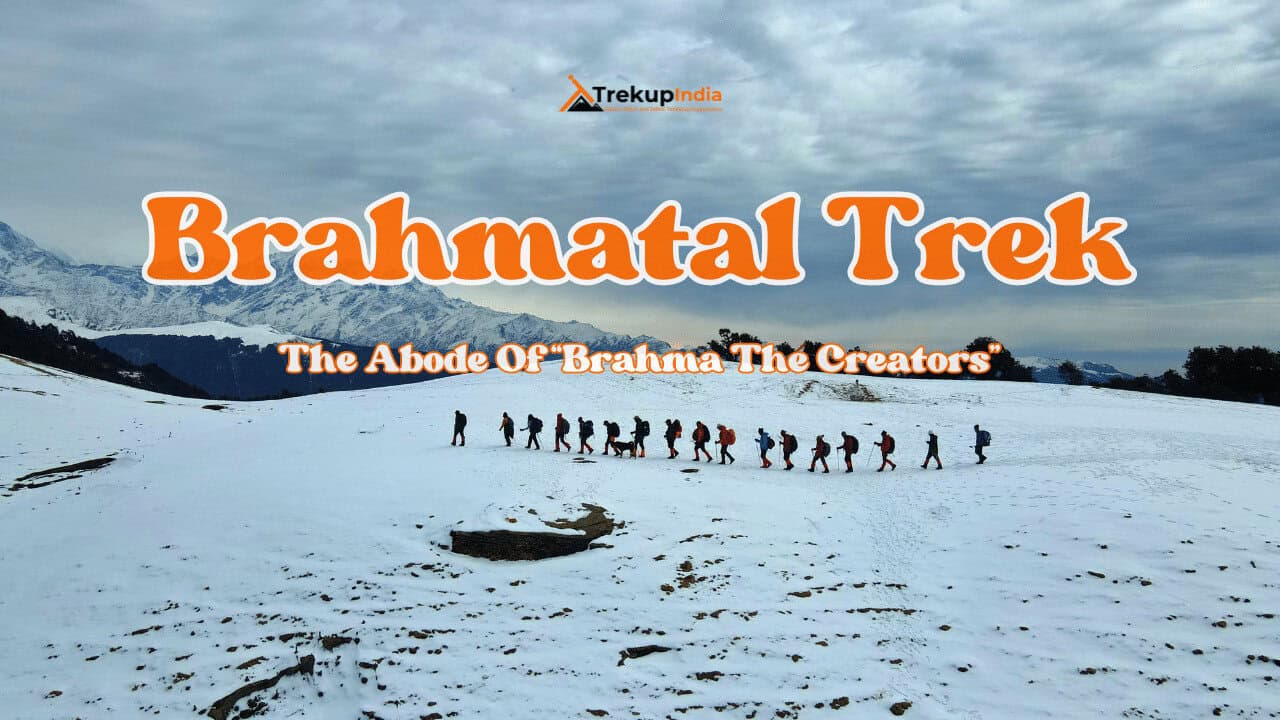
Want To Trek Like Pro?
Basically, watch these videos if you want to trek the same way professional trekkers do and make your skills better. These videos contain useful tips and techniques to further improve your trekking skills itself. These videos actually help both new and experienced trekkers improve their trekking skills. These videos definitely provide useful tips that make your trek better. We are seeing that these videos by Trekup India experts will only help you make your trekking skills better.
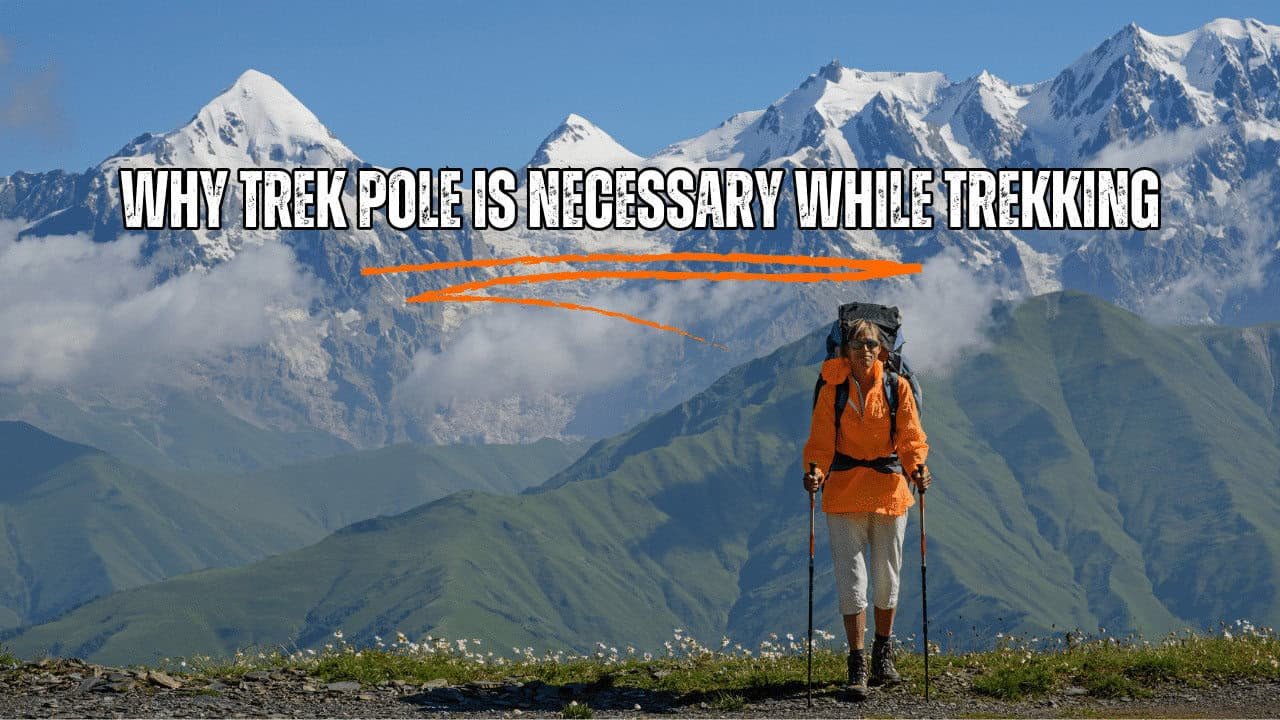
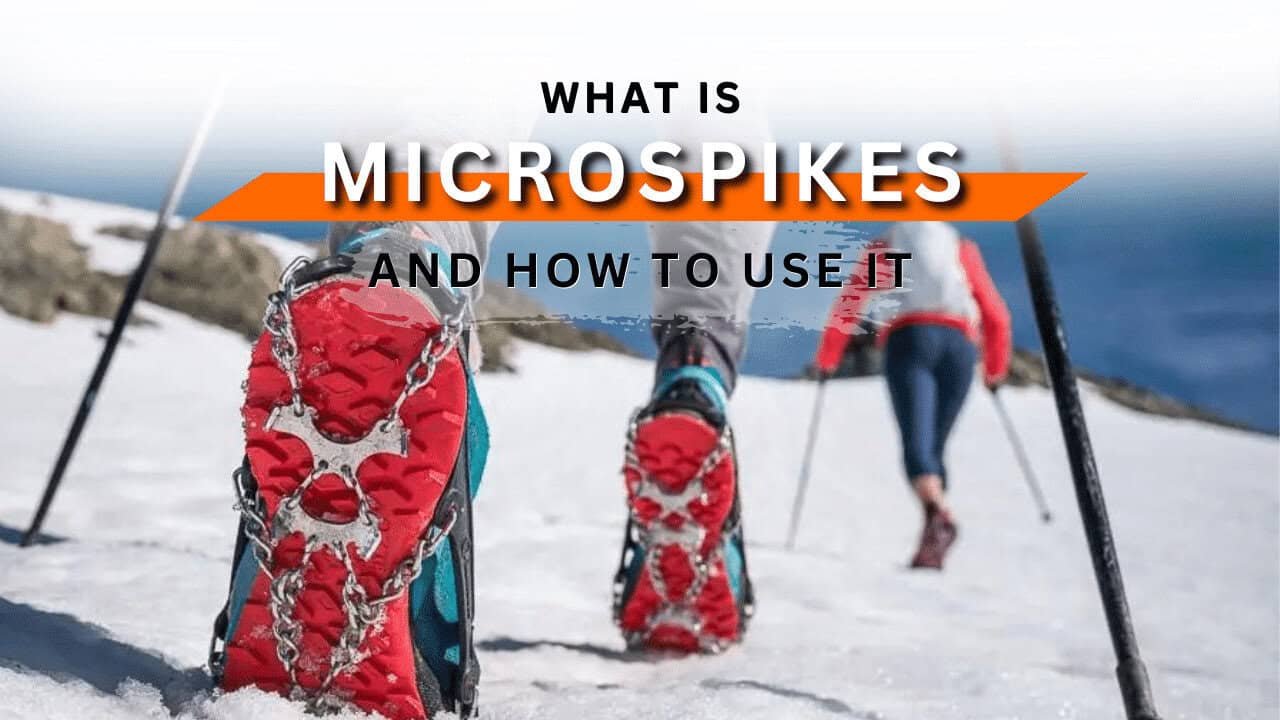
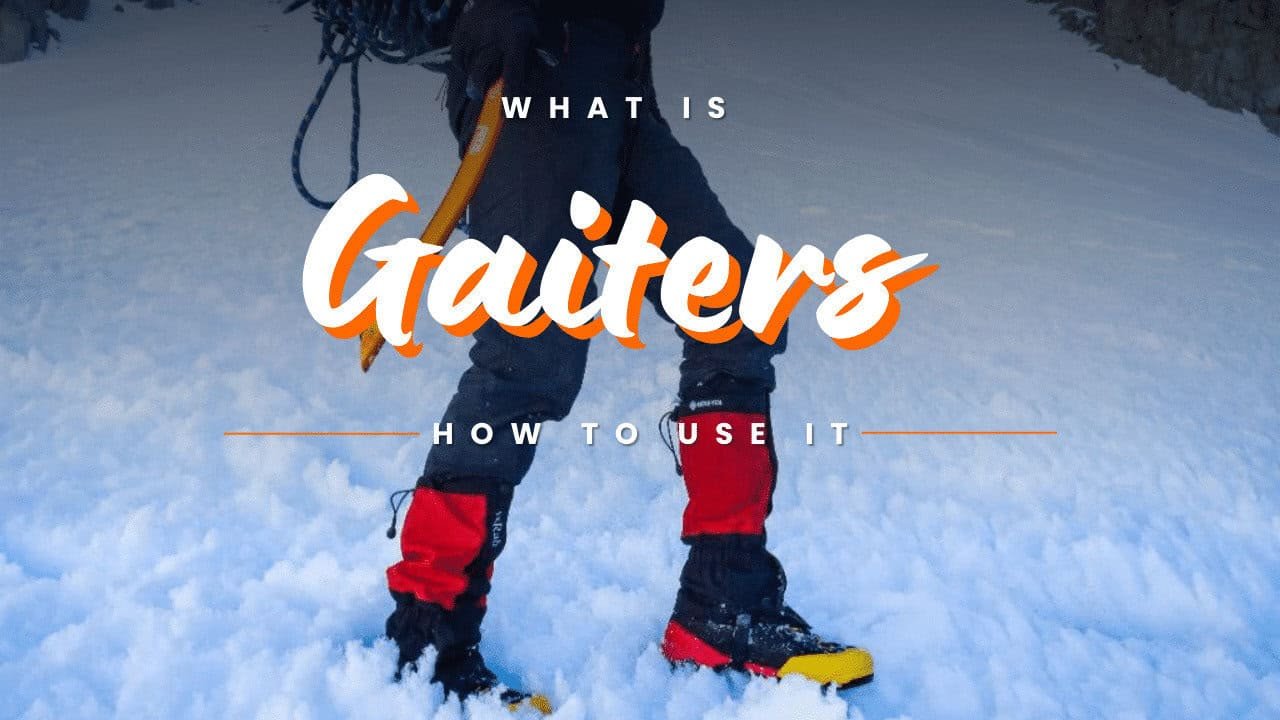
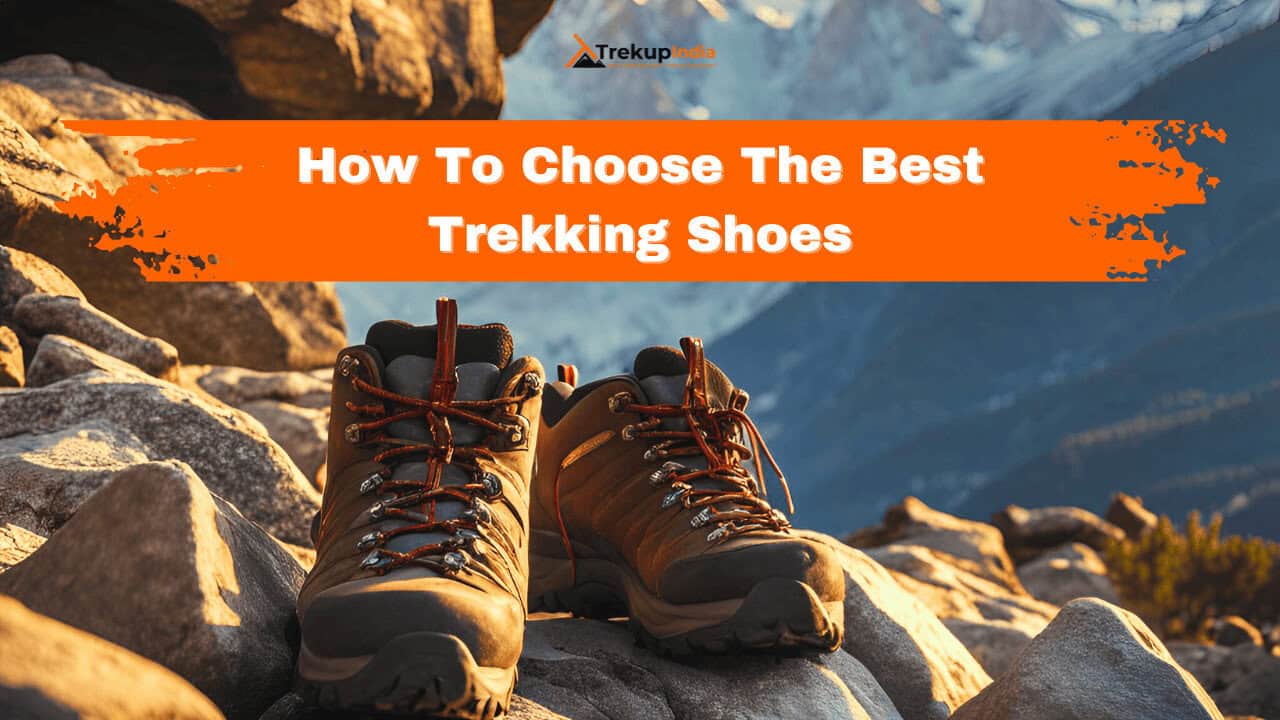

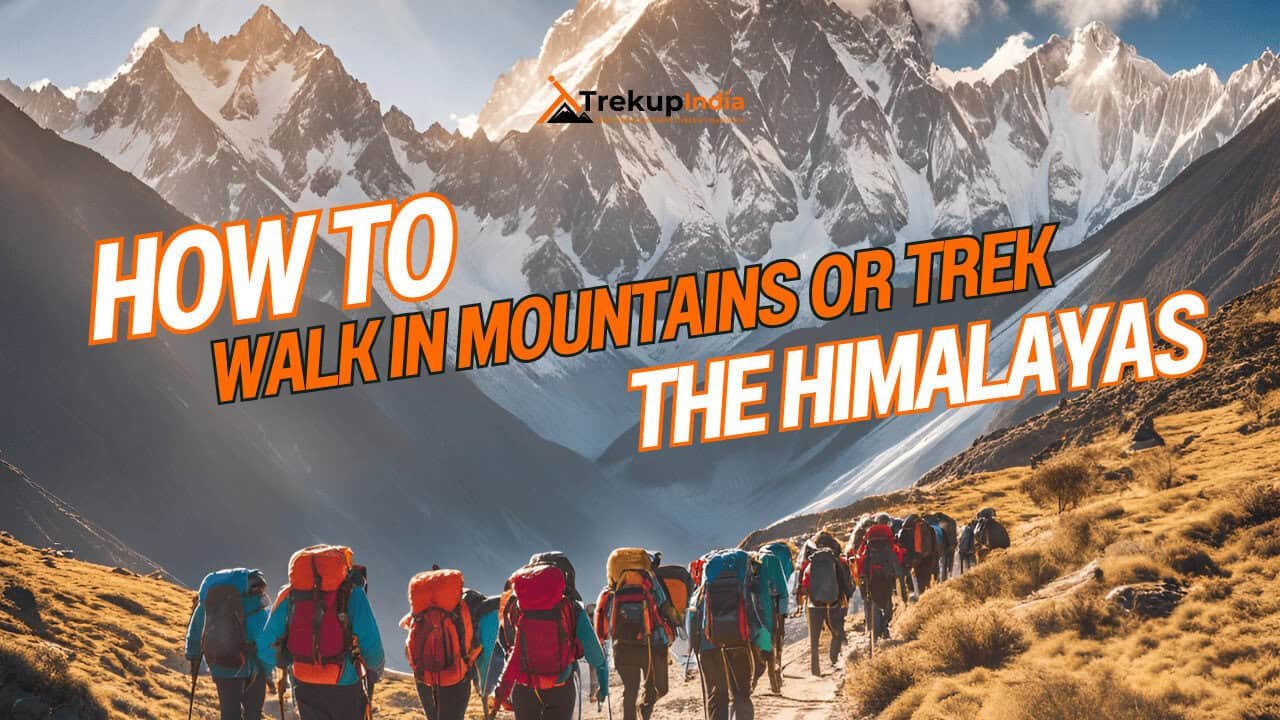

Know Everything About Acute Mountain Sickness
Acute Mountain Sickness occurs when people trek to high altitudes above 8,000 feet. This condition itself develops further due to reduced oxygen levels at such heights. Basically, as you go higher up, the air pressure and oxygen levels decrease, which causes the same problem. Acute Mountain Sickness surely causes headache, nausea, vomiting, and dizziness in affected persons. Moreover, peoples also experience difficulty in sleeping during this condition. To avoid mountain sickness, you should actually trek up slowly to higher altitudes. To learn further about this condition itself, watch the videos by Trekup India.
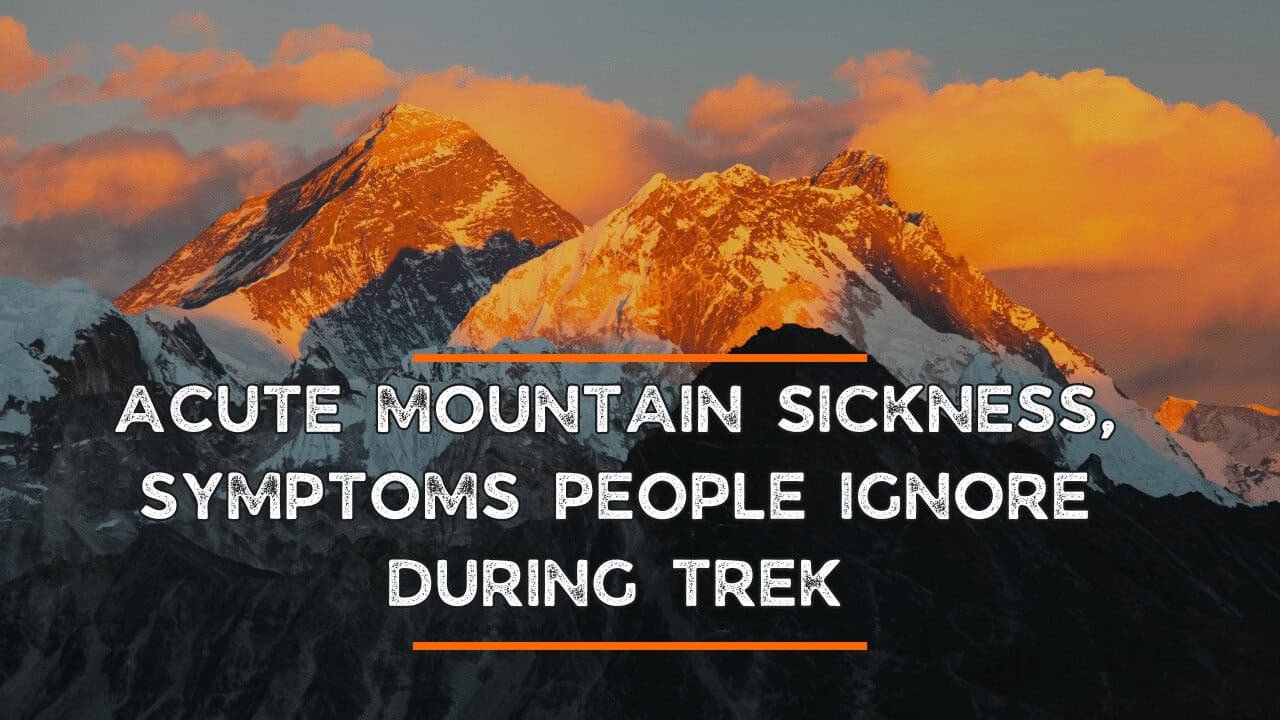
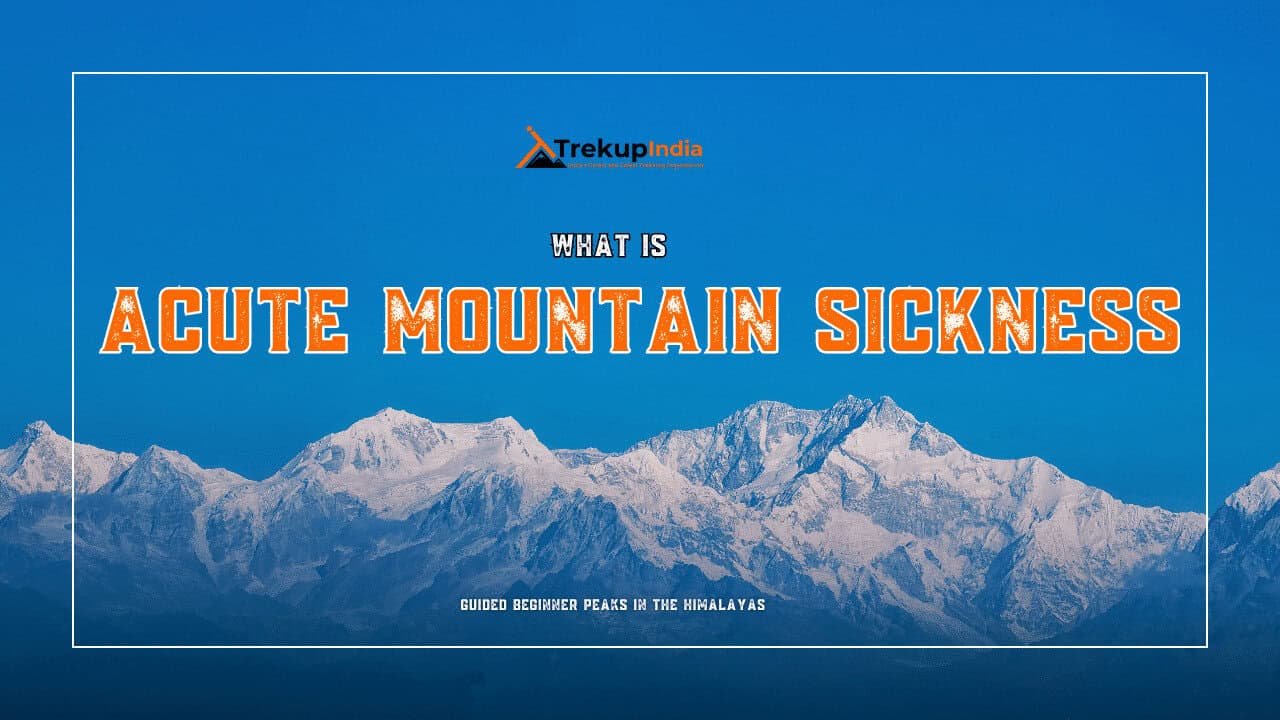
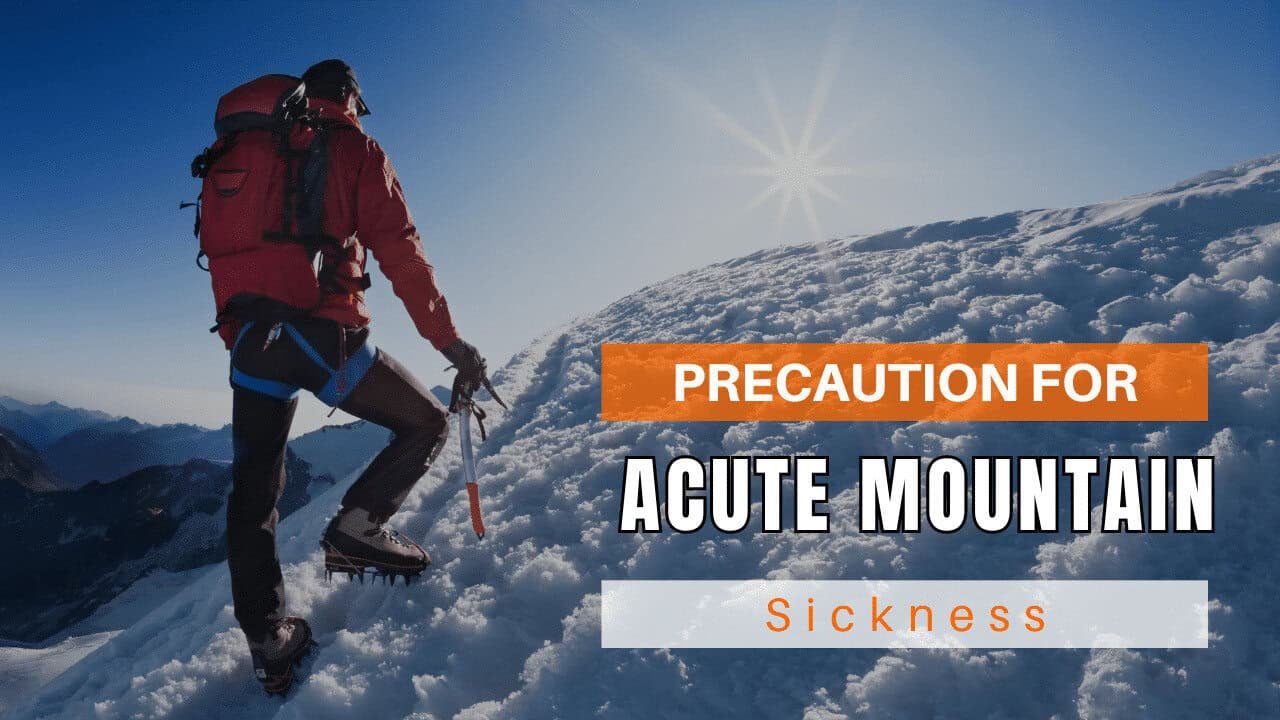
Day Wise Detailed Itinerary of Brahmatal Trek
Day 1: Driving from Rishikesh to Lohajung
- Altitude: 2,300 m/ 7,662 ft
- Drive Distance: 250 Kms
- Drive Duration: 10 Hrs
- Pickup Time and Location: Time 6:15 AM from ISBT Rishikesh
- Network available at Lohajung
- Stay will be in guesthouse
- Route: From Rishikesh to Devprayag to Srinagar to Rudraprayag to Karanprayag to Dewal to Lohajung
The journey will begin at Rishikesh. Our transport manager will meet you at ISBT Rishikesh at 6:15 AM and drive you to Lohajung, which is the village where we will start our hike. Lohajung is located in the Chamoli district of Uttarakhand and is about 250 kilometers away from Rishikesh. The journey to Lohajung takes between 10 and 11 hours and transportation is provided by Trekup India in either Bolero, Tata Sumo or traveller vehicles. Once you arrive at Lohajung, rooms will be allocated in the guesthouse.
The drive from Rishikesh will take you along mountain roads where, on clear days, you can glimpse the Garhwal Himalayas from a distance. Along the way, you will enjoy a peaceful landscape accompanied by the River Ganga. During the drive, you will come across the three main holy confluences in the country: Devprayag, Rudraprayag, and Karanprayag. Devprayag is the site where the Alakananda River merges with the Bhagirathi River, resulting in distinct teal and turquoise hues. Srinagar is another town you will pass through before reaching Rudraprayag, where the Mandakini River meets the Alakananda River. About 33 kilometers away from Rudraprayag is the third confluence, Karanprayag, where the Mandakini River meets the Pindar River.
Lohajung is situated close to the magnificent Nanda Ghunti peak. If we reach the peak before sunset, you will be able to catch stunning sunsets over the mountain’s peak and paint it with stunning shades. There’s an interesting folklore related to the name of the village. The locals claim that Goddess Parvati had a “jung” (war which means war in Hindi) with the demon Lohasur, which is where the village gets its name from. Lohajung is home to a small market, where you can purchase trekking gear and other essentials that may be helpful for your journey.
Lohajung is a town situated at the top of the mountain; therefore, you should expect the weather to get cold, particularly at night, and it could also be rainy and foggy depending on the season. Bring appropriate clothes to allow you to adjust to the changing weather.
Day 02: Trek from Lohajung to Bekaltal - The Brown Lake
- Altitude Bekaltal: 3,000 m/ 9,950 ft
- Altitude Gain: 700m/ 2,150 ft
- Trek Distance: 6 Kms
- Trek Duration: 4-5 Hrs
- Difficulty: Moderate ascent through the forest
- Hot lunch at the campsite
- Water Source: Water Sources: Springs and man-made water sources
- Bekaltal is a 15-minute walk from the campsite.
- Enjoy a walk in the evening to Bekaltal Lake and enjoy a Sunset views
- Tents Stay
On the first day of the trek, we will trek from Lohajung to the Bekaltal campsite. After a tasty breakfast, we will start our journey towards Bekalatal, where you will be mesmerized by the stunning views of Mount Nanda Ghunti. The trail will take you through a forest of Oak and Firs, and after 4 to 5 hours of walking, we will reach the Bekalatal Campsite, where we will stay overnight in a twin-sharing camp.
The trek towards the Bekaltal campsite is six kilometers long, with a gradual ascent. The path is well-defined, and after a brief walk, you will reach Mandoli, the first mountain settlement. Mandoli village will be on your left as you walk on the trail. As you continue, the trail will slowly climb up, winding through the mountain ranges, with curves and bends around each corner.
You will be able to see the Kali Valley, where the Kali and Pindari Rivers meet, and after Mandoli, you will walk through a dense forest of Oak, Fir, Cedar, and Rhododendron trees. In the spring and late winter, you can see the Rhododendron flowers bloom and add color to the mountains. The trail is covered with snow throughout the winter.
Two hours into your journey, you will come across a 10-meter-long wooden bridge that crosses a stream. You can ration water at this source. After crossing the bridge, you will reach Begum, a serene resting spot with stunning views of the mountains, including Nanda Ghunti, Navali, and Bagdi Bugyal. A further 20-minute walk will bring you to Gujreni, where you can see two streams and various Himalayan bird species such as the Asian Barred Owlet, Woodpeckers, Solitary Snipe, and Blue-fronted Redstarts.
Now, you are at the final part of today’s hike. A walk of an hour and a half will take you to the sandy beach of Bekaltal. The lake is just 15 minutes away from the campsite. After setting up your tents, you can refresh yourself and visit the lake in the evening. Bekaltal Lake is surrounded by Oak trees and has still water that is a captivating experience after the trek.
The lake’s water remains dark brown throughout the year due to the significant quantity of organic matter in it. A thin layer of ice may form in the waters when the weather gets colder. After watching the stunning sunset from Bekaltal, return to your camp for a delicious meal that awaits you in the evening. After dinner, you can rest comfortably in your camping tent.
Day 3: Trek From Bekaltal to Brahmatal
- Altitude Brahmatal: 3,200 meters/ 10,450 feet
- Altitude Gain: 400 m/ 1,300 ft
- Altitude Jhandi Top: 3,400 m/ 11,150 ft
- Trek Distance: 7 Kms
- Trek Duration: 6-7 Hrs
- The ascent is steep for 1.3 hours via Bekaltal and then gradual ascent. The descent is steep in the next section. The final stretch includes a gradual descent to the campsite.
- Hot food is served at the campsite.
- Water Source: No water source is available on the way; therefore, carry at least two bottles of water from the campsite.
- A beautiful day can be seen in Shivalik and the Greater Himalayas.
- Enjoy a night walk along Brahmatal Lake, about 500m from the campsite.
- Tents Stay
Brahmatal is located at an elevation of 3,200 meters (10,450 feet) while Jhandi Top is situated at an even higher altitude of 3,400 meters (11,150 feet). The trek is 7 kilometers long and takes about 6-7 hours to complete. During the trek, you will gain an altitude of 400 meters (1,300 feet). The ascent is steep and takes about 1.3 hours via Bekaltal, followed by a gradual ascent. The descent is steep in the next section, but the final stretch includes a gradual descent to the campsite.
Hot food is served at the campsite, but there is no water source available on the way. Therefore, it is recommended to carry at least two bottles of water from the campsite. From the campsite, you can enjoy a beautiful view of the Shivalik and the Greater Himalayas. You can also go for a night walk along Brahmatal Lake, which is about 500 meters from the campsite.
Take advantage of the snow-covered paths that lead to Brahmatal. The hike takes about four hours. The trail is surrounded by dense forests, and once you reach the Telindi summit, you can enjoy breathtaking views of the majestic Himalayas. Continue on the path until you arrive at Brahmatal and Khabekhal Lake. Spend the night in tents and enjoy the serene surroundings.
Day 4: Brahmatal Lake to Brahmatal Top Point and Return to Daldum Camp
- Daldum Altitude: 2,850 m/ 9,350 ft.
- Brahmatal Pass Altitude: 3,500 m/ 11,570 ft.
- Trek Distance: 12 Kms
- Trek Duration: 8-9 Hrs
- The trek is moderately difficult until you reach the top of Brahmatal, after which you will descend towards Daldum Campsite via Jhandi Top.
- You will pass through Rhododendron and Oak forests.
- You will have a packed lunch at the top with stunning 360-degree views of the mountains.
- The first 180 degrees of the view covers Chaukhamba, Mana, Mandir, Neelkanth, Nilgiri, Nanda Ghunti, Trishul, and Maitoli up towards the Panchachuli Ranges. The remaining 180 degrees cover the Shivalik Himalayan Mountains.
- There is no source of water on the way, so carry at least two litres of water with you.
- You will stay in tents.
After having breakfast, you can prepare yourself for the climb up to the top of Brahmatal. Take a stroll along the treacherous pathways across Chota Jhandidar and Bada Jhandidar. A mountain ridge encloses this trail with valleys on both sides. It will take approximately 2.5 hours to arrive at Brahmatal Top. While on this journey, delight in the breathtaking views of the Himalayan Ranges. Mt. Trishul is very close, and you can enjoy panoramic views from Nandhaghunti. From the top, you will be able to enjoy stunning views of the snow-covered Himalayan Ranges. After that, continue your journey to the following camp location in Daldum, which should take around 3 hours to complete. You would have covered a distance of 2.7 kilometers with this hike. The forests will also be your companions on these hiking trails.
Day 05: Return Back to Base Camp Lohajung
- Lohajung Altitude: 2,350 m & 7,700 ft
- Trek Distance: 4 Kms
- Trek Duration: 3 to 4 Hrs
- Altitude Loss: 500 m/ 1,650 ft
- A steep and gradual ascent
- Guesthouse stay
To get to Lohajung, which is situated at an altitude of 2,350 meters (7,700 feet) and is 4 kilometers away, you need to go left from Daldum. The trek takes around 3 to 4 hours and requires you to climb steep and gradual paths, with an altitude loss of 500 meters (1,650 feet). The climb follows an easily-marked trail that crosses streams and goes through the forest of Oak and Rhododendron that you already travelled through. You’ll come across the shepherd’s huts that locals use to house their livestock, and from there, take the stone-paved path that connects the mountain communities to Lohajung.
Once you reach Lohajung, you can freshen up at the guesthouse and then wander around the town in the evening. The sunsets from Lohajung are spectacular, and you can also visit the town market to purchase souvenirs from the excursion. The guesthouse serves the most delicious meals, and you can enjoy a peaceful night’s rest. The next day, we’ll drive back to Rishikesh.
Day 06: Back to Rishikesh
- No Accommodation
- Meal Breakfast Only
Today marks the conclusion of a fantastic journey as we head to Rishikesh. After having your last morning tea and breakfast with the team TUI, we’ll depart towards Rishikesh, which is located 250km from Lohajung. The journey will take approximately 10 hours, and we should arrive in Rishikesh at 7:00 pm. However, the travel time may vary depending on the road and traffic conditions. We’ll be taking the same routes to Rishikesh as before.
We’ve prepared a comprehensive Trek Route Map for your upcoming adventure to Ali Bedni Bugyal Trek, which outlines the entire journey including all stops and trails. This map provides detailed information on the terrain, distance between points of interest, and estimated travel time to help ensure a safe and enjoyable trek. We’ve carefully curated the map to ensure that you have all the necessary information at your fingertips. Please take a moment to review it thoroughly, and don’t hesitate to reach out if you have any questions or concerns.
The Brahmatal Trek Altitude Chart is a useful tool for Trekkers to monitor their altitude changes during their rides, allowing them to plan their routes more efficiently and track their progress over time. This altitude chart is beneficial for both casual and experienced Trekkers, helping them make the most out of their Trek experience.
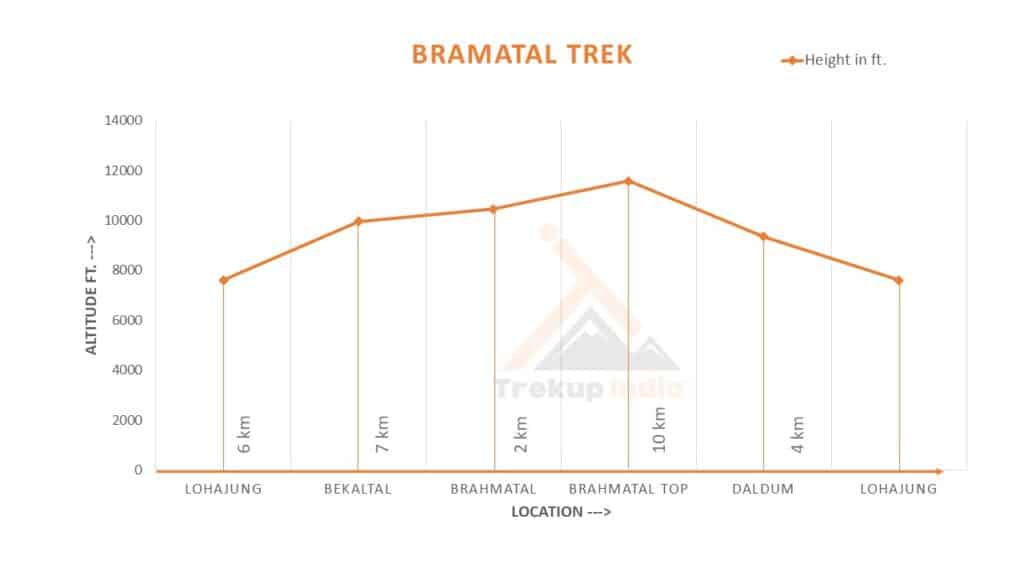
What should you pack for the Brahmatal Trek
Ali Brahmatal Trek is a high-altitude trek. The trekking gear you have to have for this particular trek differs from normal treks. Thus, read this whole segment. There is an important question that the trekker who is doing trek asks, like what all things to carry while trekking. Below, we have provided the details on everything you should take; an easy way to remember is by Head to foot or foot to head. We have prepared from Head to foot.
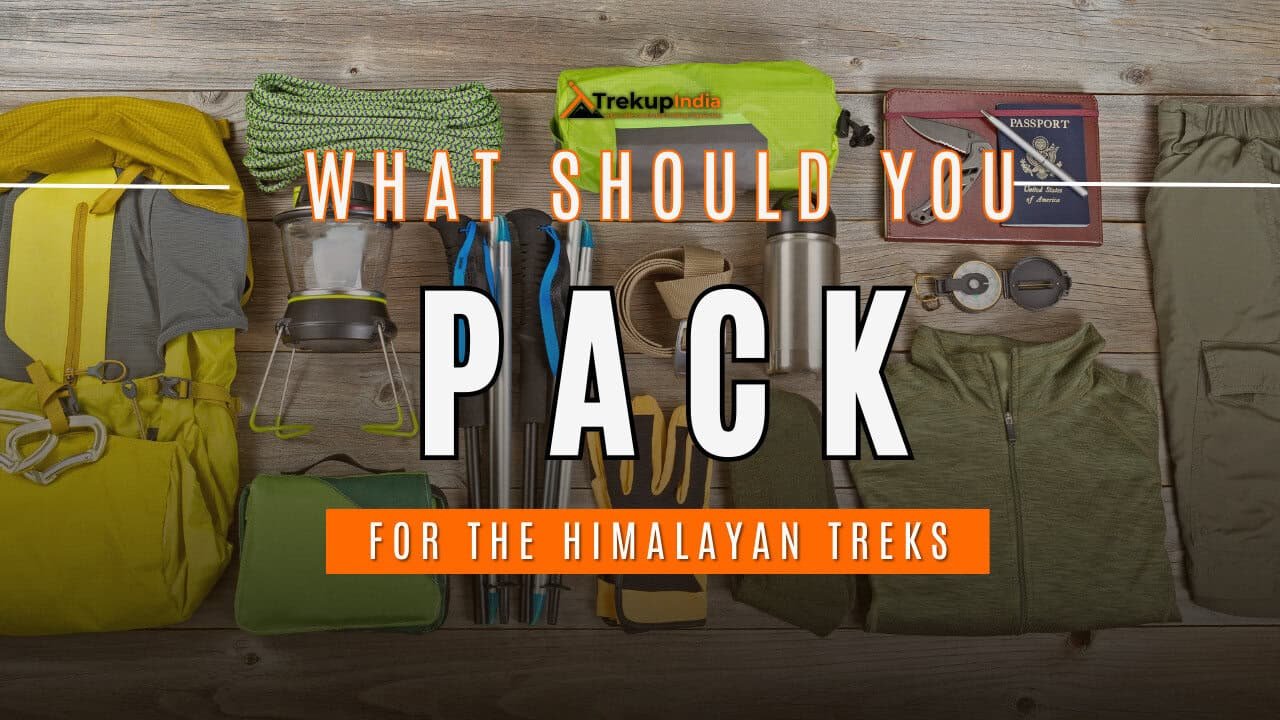
Head Gears
When trekking it's important to carry headgear to protect your head and face.
Heading out for Brahmatal Trek? Don’t forget to carry headgear to protect your beautiful face and head from the sun, wind, and dust! It’s an essential accessory that keeps you safe and comfortable throughout your adventurous journey. So, make sure you pack it before you step out into nature!
- Head Lamps are essential for the night, and most importantly, headtorchs keep your hands free while trekking.
- Hats or Cap– Cap will protect you from winds and sometimes freezing temperatures for the night. Hats protect you from the sun during the day and also ensure they have a strap so the hat doesn’t blow from the wind.
- Sunglasses– you will need specific sunglasses for trekking. The glasses should protect from UV rays, fit your face perfectly so it doesn’t fall while you climb, jump, or cross an obstacle, and be according to the weather conditions of the place; the glass should be made to fit different weather conditions.
- Buff / Balaclava– You must carry this to protect your mouth or neck from extreme temperatures and keep it warm.
Clothes
When trekking in high altitudes, prepare for cold weather by wearing layers. Layering traps heat, keeps you warm, and allows you to easily adjust your clothing as temperatures fluctuate.
Layering is important for different seasons when trekking to Brahmatal Trek. When planning a high-altitude trek, it is important to prepare for the cold weather. Wearing layers is the best approach as it provides both protection and flexibility when the weather changes frequently in the mountains. Layering helps to trap heat and keep your body warm, while at the same time allowing you to easily adjust your clothing as the temperature fluctuates. By wearing layers, you can enjoy your trek comfortably and stay safe in the unpredictable mountain weather
- For spring, summer, and monsoon treks, consider wearing three layers: a woollen sweater, a fleece, and a padded jacket.
- For autumn treks, add one more fleece layer to make it four layers.
- For winter treks, you may need five layers with thermals, a woollen sweater, two fleeces, and a padded jacket.
- T-shirt/sleeve shirt– Bring three T-shirts and two quick-dry trek pants, wearing one and carrying the others. Long sleeve shirts help to protect from sun UV rays. We recommend synthetic T-shirts as they get dry quickly when they get wet.
- Hiking / Trekking Jacket– down jackets (-5 to-10 C) or two-three-layer jackets.
- Thermals– at least two pairs of thermals help keep the body warm during cold weather.
- Undergarments– you can carry them according to your habitual and hygiene requirements.
- Gloves– 1 pair of gloves will keep your hand warm and nice.
- Trek Pants– Bring 2 to 3 comfortable trekking pants. Trekking pants play a significant role, as they are designed for comfort and mobility, making trekking easier. It should be Synthetic so that it gets dry quickly when wet.
- Rain Wear– you can carry a raincoat or Poncho. During long rains and snowfalls, the waterproof jackets start leaking. Still, the Poncho and raincoats keep you dry, so choose accordingly.
Tip: If you choose a raincoat on your trek, carry a small waterproof cover so things inside your backpack can’t get wet. If you carry a Poncho, you don’t need to worry. It protects both you and your backpack.
Foot Gears
When it comes to planning a trek, one of the most important aspects is to ensure that you have the right kind of foot gear.
- Trekking shoes whichare waterproof and have ankle support. Walking / Hiking sandals which can be used off the trek, i.e., in the morning and evening hours when you reach the campsite, basically to get your feet rest from heavy boots, sometimes used for crossing streams and rivers, it’s more comfortable and safer than crossing barefoot or wetting your shoes. Sneakers (Optional) can be worn for normal driving days or used around the camp.
- Socks– you should at least carry 3 to 4 pairs.
- Microspikes & Gaitorswill be provided by Trekup India when required. You don’t have to carry them.
Personal First Aid Kit
Don't forget to pack your personal first aid kit! It's always better to be safe. So, make sure you're prepared for any unforeseen circumstances.
Below are some common medicines generally required/used during your adventure trip; however, please consult your doctors prior.
- Antiseptic towel or water syringe (to clean the wound)
- Butterfly bandage for a small cut
- Cotton and elastic bandages and sterile gauze pad for larger wounds
- Latex gloves are used when the wound bleeds.
- Medicine for Diarrhea (Upset stomach)
- Medicine for cold, flue/fever, headache
- Some pain killers
- ORS pouches
- Quick pain relief spray (External use)
- Any personal medicine prescribed by your doctor
- Dimox / Similar for high altitude sickness
- Bug Repellent
- Carry some nutria/energy bars and drinks (non-alcoholic)
- Note: Kindly consult your doctor before purchasing or taking any medicine.
Gadgets and Other Items
You might also consider bringing a camera, binoculars, portable charger, and snacks. Be well-prepared and tackle any trail with confidence.
- Trekking Poles
- Mobile phone
- Camera
- Spare batteries for phone and camera, power bank
- Lightweight flashlight or headlight
- A waterproof bag made of plastic is used for the camera.
- Plug/converter for electrical items
- 1-litre water bottle
- A journal with a pen would be a good idea to keep your notes.
- Some book of your interest for the ideal time
- Get into the habit of maintaining a Map and guidebook of the region.
Hygiene & Personal toiletry
Remember to pack hygiene and personal toiletry items such as soap, shampoo, toothbrush, toothpaste, deodorant, and toilet paper.
- Sunscreen with UV protection
- 1 or 2 small quick-drying towels
- Toilet paper/tissues/wet wipes
- Toothbrush/toothpaste/ mouth freshener
- Deodorant / Talcum powder
- Shampoo
- Lip-gloss/salve
- Sanitary pads/tampons (For female trekkers)
- Bio gradable Soap
- Nail clipper
- Your other personal items that you use daily.
Compulsory Documents to Carry
There are certain documents that you should always carry with you. These documents are not only necessary for your safety and security, but they may also be required by local authorities.
These files must be submitted to the Forest Department before your trek. With none of these, you will not be permitted to trek—original and photocopy of government photo identity card. Carry IDs like Aadhaar, voter ID, etc.
How To Plan Your Trek & Reach Rishikesh?
By Air:-
- Jolly Grant Airport is the nearest airport to reach Rishikesh by flight that is located almost 25km away from the city. You can find regular flights from Delhi to Rishikesh.
- However, if you are planning to reach Rishikesh by flight then it is better to come one day in advance.
By Train:-
In case, you want to reach Rishikesh from Delhi by train then you have to reach Hridwar 1st then from there you can take bus to Rishikesh its 35 kms from Haridwar to Rishikesh.
By Bus:-
From Delhi, you can find a regular bus service for Rishikesh. ISBT Kashmere Gate is the main bus station in Delhi from where you will find both ac and non-ac buses for Rishikesh.
However, it is always better to take government buses from Kashmere Gate ISBT. The bus will drop you at Rishikesh ISBT and then we will send our staff who will pick you up from isbt rishikesh so you need to reach there.
- At 06:30 am, Bolero, Tata Sumo, travller or any other vehicle like this will only pick you up from Rishikesh.
- By 05:00 pm, you will be reaching Lohajung.
Fitness Required & Preparation Guide For Brahmatal Trek
If you’re preparing for a Brahmatal Trek, Trekup India recommends jogging as part of your fitness routine. Jogging helps work out the same muscle groups that you’ll use during trekking and can help you build endurance. You don’t need any special equipment to get started.
Fitness Target
Trekup India has put the Brahmatal Trek into an easy-to-moderate-grade-level trek.
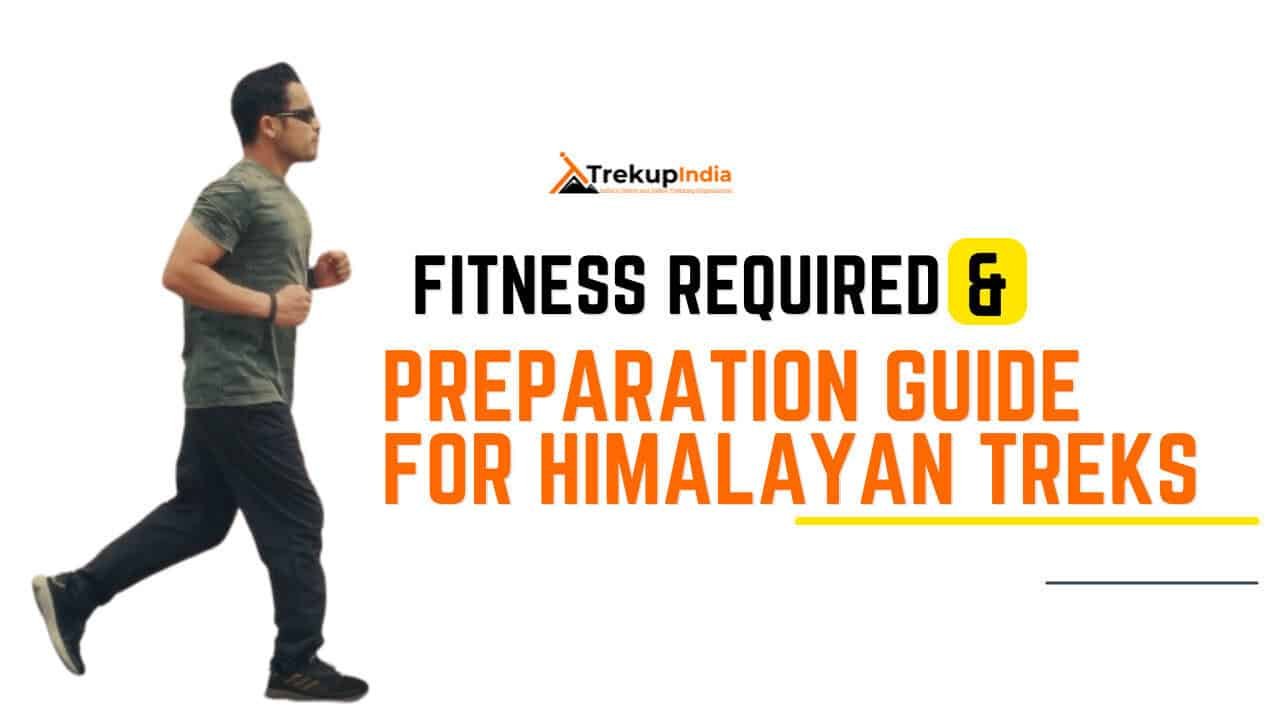
For Easy – Moderate Treks – In order to be well-prepared for your upcoming trek, it is recommended that you focus on building your endurance by aiming to cover a distance of 4.5 kilometers in less than 45 minutes. This will help you to develop the necessary stamina and strength required to successfully complete your journey.
How to Achieve This Fitness Target?
To start preparing for your trek:
- Try jogging for at least five days every week.
- If you find 5 km too difficult at first, begin with 2 km and gradually increase over 2-3 weeks.
- Once you feel more comfortable running 5 km, focus on improving your speed gradually on a daily basis.
It is important to ensure that you can consistently complete 4.5 km in under 40 minutes for at least two weeks before your planned trek. Allow yourself 6-8 weeks to prepare physically for the journey.
Strength Training exercises that benefit Trekking
Trekking is an activity that demands a good level of strength.
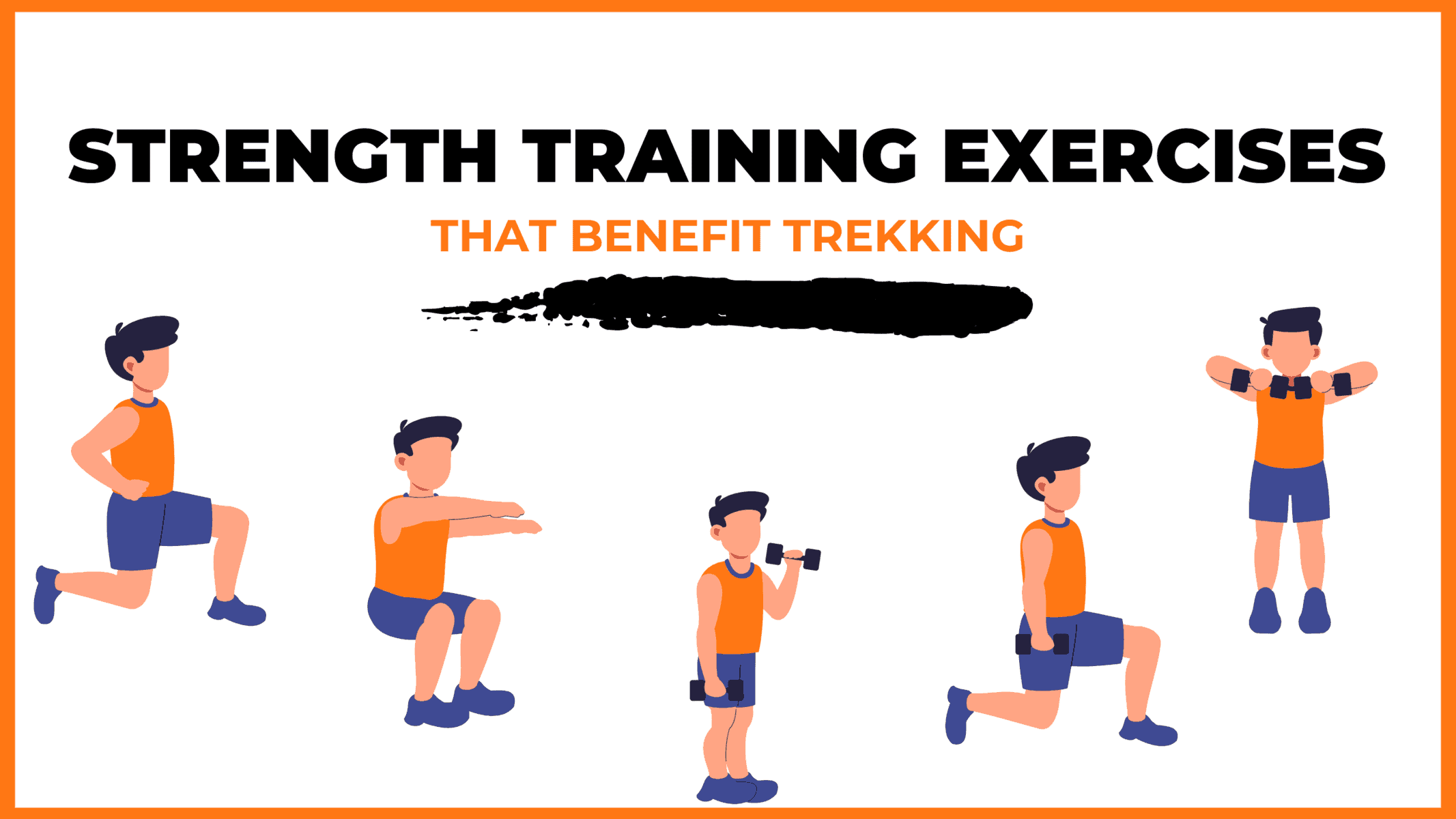
Trekking is a demanding activity that requires good cardiovascular endurance, muscular strength, and overall fitness. To help you prepare for your trek, incorporating bodyweight exercises into your training routine can be an effective way to build strength, improve stability, and enhance endurance, all of which are crucial for a successful trek. In this regard, here’s a breakdown of body weight exercises categorized by the specific body parts they target and the benefits they offer during trekking.
1. Lower Body Exercises
Lower body exercises like squats and lunges are great for building lower body strength, essential for trekking.
a. Squats
Squats are an excellent exercise for building lower body strength, essential for trekking. They target the quadriceps, hamstrings, glutes, and calves. Solid quadriceps and glutes provide power for ascending and tackling uphill climbs, while vital hamstrings aid stability during descents. This is particularly helpful in navigating uneven terrain during trekking.
How to perform Squats Exercises:
- Stand with feet shoulder-width apart, toes pointing slightly outward.
- Lower your body by bending your knees and hips, keeping your back straight.
- Lower until your thighs are parallel to the ground or as low as comfortable.
- Push through your heels to return to the starting position.
b. Lunges
Lunges target the quadriceps, hamstrings, glutes, and calves. They improve lower body strength, balance, and stability, crucial for maintaining control on rocky trails and steep slopes. Additionally, they enhance flexibility, reducing the risk of injury while trekking.
How to Perform Lunge Exercises:
- Stand with feet hip-width apart, hands on hips or sides.
- Take a step forward with one foot, lowering your body until both knees are bent at 90-degree angles.
- Push through the heel of your front foot to return to the starting position.
- Repeat on the other side, alternating legs.
2. Upper Body Exercises
Upper body exercises such as push-ups and pull-ups effectively strengthen the upper body, especially the chest and shoulders, which are essential for carrying a backpack during treks.
a. Push-Ups
Targets: Chest, shoulders, triceps, and core.
Benefits for Trekking: Push-ups are an effective exercise to strengthen the upper body, especially the chest and shoulders, essential for carrying a backpack during treks. Improved upper body strength will also help maintain posture and stability while traversing challenging terrain.
How to Perform Push-Ups Exercises:
- Start in a plank position with hands shoulder-width apart and body in a straight line from head to heels.
- Lower your body by bending your elbows until your chest nearly touches the ground.
- Push through your palms to return to the starting position.
- Keep your core engaged throughout the movement.
b. Pull-Ups/Bodyweight Rows:
Targeting the back, biceps, and shoulders can significantly benefit trekking. You can strengthen these muscle groups by performing pull-ups or bodyweight rows and improve your posture and balance while carrying a backpack. Additionally, more muscular back muscles can help reduce the risk of back strain and fatigue during long treks, making your journey safer and more comfortable.
3. Core Exercises
Core exercises like planks and Russian twists can help strengthen the core muscles, which are crucial for maintaining stability and balance while trekking on uneven terrain.
a. Planks
Targets: Abdominals, obliques, and lower back.
Benefits for Trekking: Planks are an effective exercise that helps strengthen the core muscles. These muscles are crucial for maintaining stability and balance while trekking on uneven terrain. A strong core also helps improve posture, reducing the risk of back pain and fatigue during extended hikes.
How to Perform Planks Exercises:
- Start in a plank position with elbows directly under shoulders and body in a straight line from head to heels.
- Engage your core and hold the position, avoiding sagging or arching the back.
- Keep breathing steadily and hold for the desired duration.
b. Russian Twists
Targets: Obliques, abdominals, and lower back.
Benefits for Trekking: Russian twists engage the core muscles, particularly the obliques, improving rotational stability and balance. Enhanced core strength helps prevent injuries and improves overall performance during trekking.
How to Perform Russian Twist Exercises:
- Sit on the ground with knees bent and feet flat, leaning back slightly to engage the core.
- Clasp hands together and twist the torso to one side, bringing the hands towards the ground beside the hip.
- Return to the centre, then twist to the other side.
- Continue alternating sides for the desired number of repetitions.
4. Full Body/Cardiovascular Exercises
Full-body/cardiovascular exercises like burpees and mountain climbers are excellent for improving cardiovascular endurance, strength, and agility.
a.Burpees
Burpees are an excellent full-body exercise that targets your legs, chest, arms, and core. This exercise dramatically benefits trekking enthusiasts, improving cardiovascular endurance, strength, and agility. Regularly incorporating burpees into your workout routine can enhance your overall fitness level, which can help you endure long hikes and rugged terrains with ease.
How to Perform Burpees Exercises:
- Start in a standing position.
- Squat down and place hands on the ground.
- Jump feet back into a plank position.
- Perform a push-up.
- Jump feet back to the squat position.
- Explosively jump up into the air, reaching overhead.
- Land softly and repeat the sequence.
b. Mountain Climbers
Mountain climbers target the core, shoulders, chest, and legs. This dynamic, full-body exercise can significantly improve cardiovascular endurance and agility. It is an excellent functional workout for trekking preparation as it engages both the upper and lower body muscles while strengthening the core muscles.
How to Perform Mountain Climbers Exercises:
- Start in a plank position with hands shoulder-width apart and body in a straight line from head to heels.
- Drive one knee towards the chest, then quickly switch legs, alternating in a running motion.
- Keep the core engaged and the hips stable throughout the movement.
- Continue at a moderate to fast pace for the desired duration.
Incorporating bodyweight exercises into your training routine can help you build strength and endurance and prepare your body for the physical demands of trekking. Consistency and proper form are crucial to maximizing the benefits of these exercises and ensuring a safe and enjoyable trekking experience. Engaging your core muscles, including obliques, abdominals, and lower back, with Russian twists can improve your rotational stability and balance, preventing injuries and enhancing overall performance during trekking.
When incorporating strength training exercises into your workout routine, it’s essential to maintain proper form and technique to avoid injury. Start with lighter weights and gradually increase the intensity as you progress, focusing on compound exercises targeting multiple muscle groups simultaneously. Some examples of practical strength training exercises for trekking include squats, lunges, deadlifts, and pull-ups.
Remember to give your muscles time to recover between workouts, and remember to stretch before and after your workouts to prevent injury and improve flexibility. Combining strength training with jogging and proper stretching allows you to take your fitness to the next level and confidently tackle even the most challenging treks.
Our Trekkers Reviews And Expreinces




We provide only Indian vegetarian food, and your meal will mainly consist of Indian bread, vegetables, lentils, rice, and a delicious dessert. During your trek, we will serve three meals a day, including breakfast, lunch, and dinner. You will also be served tea, snacks, and lip-smacking soup in the evening before dinner. If it is a long day of trekking, you will be given a packed snack.
After extensive research on the trekkers’ nutritional requirements, we prepare the menu. Before putting all the meals together, we also consider the altitude and the weather.
The meal we serve during the trek is perfectly balanced with calories, carbohydrates, vitamins, protein, fibre, and minerals. You need to know that all our cooks have great expertise in cooking and have undergone thorough training. So, get ready to enjoy delectable and lip-smacking dishes during your trek. You will be served with lemon tea in the tent to start your day with a refreshed feeling. Before leaving the campsite for trekking, you will be given a hot finger-licking breakfast like upma, Aallu Prantha, Besan Chilla, Poha, Daliya, Corn flakes, and Maggie, along with tea or coffee.
If your trek is longer, we also offer some fresh local fruits such as apples and healthy drinks like Frootie or Maaza. In the afternoon, you will be served a simple & healthy lunch, while at around 04:00 pm, you will be given tea and a light evening breakfast. After you reach your campsite at night, you will be served a hot and delightful dinner.
After reading this, you must have understood the food we provided on the trek; you don’t need to worry about food. Many trekkers repeatedly trek with us because of the food we provide. Thus, we will give you unforgettable experiences.
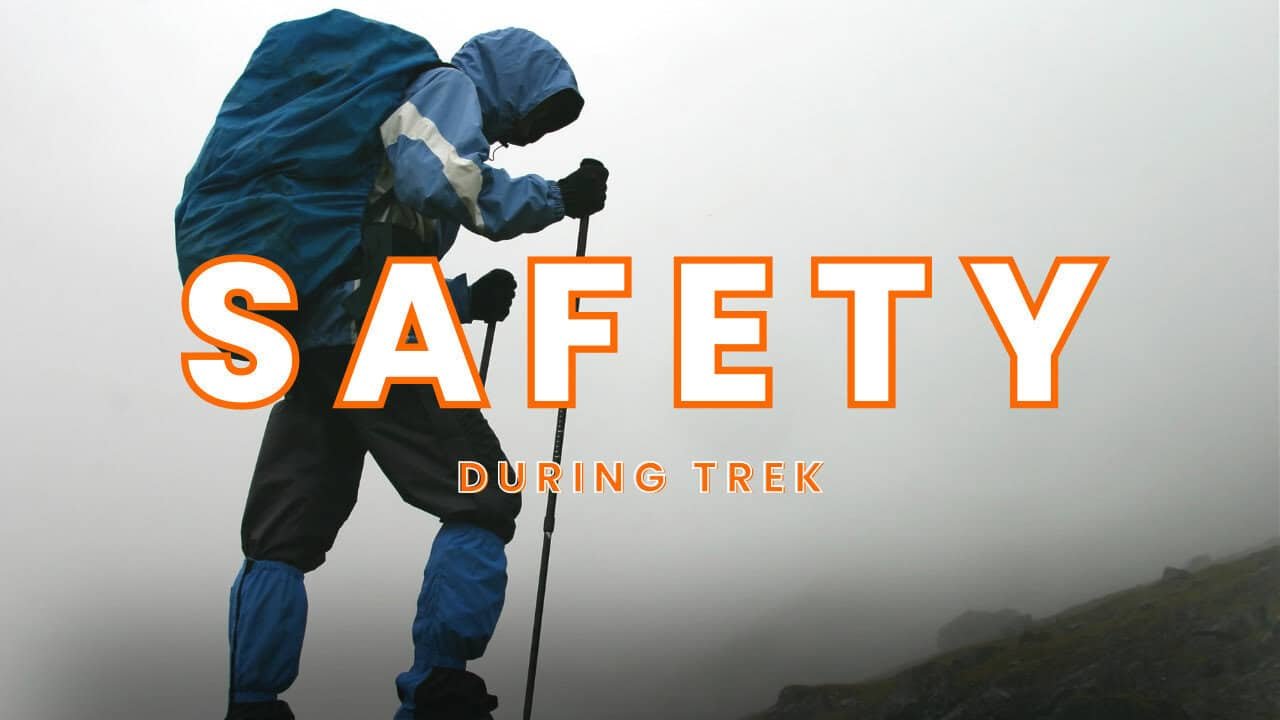
Trekking with us for the Brahmatal Trek is entirely safe because we have a team of trek leaders qualified in Wilderness first-aid and complete information about the high-altitude glitches. During the trek, we carry a full first-aid kit that contains all the essential medicines. Before trekking with us, you must ensure that you are medically fit for the trek; for us, your medical fitness is more important than anything else.
Right from our establishment, we at Trekup India have been continuously introducing new safety practices into Indian trekking to ensure the safety of voyagers. Trekup India introduced microspikes and made emergency bottled oxygen mandatory for all treks. Our trek leaders take your daily Pulse oximeter reading. We at Trekup India introduced the radio walkie-talkie as a safety communication device.
How can we ensure that your trek is safe with us?
We have noticed that most trek-organizing organizations do not follow these systems, but with time, they are following us; several competing companies are adopting these practices and organizing great, safe treks.
We ensure complete technical safety in the mountain. Our company has a vast team of more than 100 guides and trek leaders who serve on Himalayan treks. One of the best things about our team is that all the members are trained professionally by the Nehru Institute of Mountaineering, Indian Mountaineering Foundation Delhi, and Hanifle Center Outdoor Education Mussoorie.
Explore our New Safety Protocols
To ensure a perfect Trek, we have introduced some new safety checks to ensure excellent safety for our trekkers.
Our On-trek safety checks include:
- Daily oxygen saturation, along with pulse readings
- Stretchers team appointed on every trek
- Radios
- Trained mountain staff and complete safety
- Additional oxygen cylinders
- Special medical kit for high-altitude treks
- Microspikes on all types of snow treks
- Experienced Trek leaders, as well as safety
- Technical team on all snowy slopes
For Us, Your Safety Is the Top Priority
At Trekup India, you will find a team with local knowledge and fluency in English and Hindi. This helps ensure that you have a fantastic trek. Not only this, but we also pay attention to your health and safety because this is something we cannot ignore. All the team leaders involved in trekking have already undergone several professional courses in first aid, portable altitude chamber training, CPR, environmental awareness training, and advanced wilderness emergency medicine.
We also carry a complete first aid medical kit on every trek and trip we organize. Apart from the medical kit, we take a portable altitude chamber (if needed) and medical oxygen for all high-altitude treks. Our company has significant expertise in organizing all sorts of group adventure holidays for family groups, school and college groups, and friend groups. We have many travel options that suit different fitness levels and travelling styles.
Regardless of the group size, we value each and every member of our trekking groups. Our commitment to personal attention ensures that your needs and safety are always our top priority.
Who we are?
Trekup India has been a stalwart in the Adventure Tourism industry for 30 years. Since our inception, we have been dedicated to providing top-notch treks, voyages, trekking programs, and high-altitude expeditions. Our extensive experience is a testament to our commitment to your adventure and safety.
We organize treks in Uttarakhand, Kashmir, Sikkim, and Himachal while being part of the trekking community; we feature more than 75 documented Himalayan treks. In addition to other outdoor activities, our company also organizes trips for schools, colleges, and families.
Therefore, we maintain the quality of services offered to our valuable customers.
Must Read These Information Of Brahmatal Trek
Why You Should Do Brahmatal Trek?
1: The Rhododendron forest extends from Lohajung up to Bekaltal
Brahmatal is a forest paradise with stunning walks. The woodland walks allow you to explore the ages-old forest of Oaks and Rhododendrons. The thing that sticks with me is the special section dedicated to Rhododendrons! From Bekaltal, there is an area that is demarcated Rhododendron forests.
The Rhodo forests provide a delight for the eyes. The branches twist and spin with different shapes. The trunks are generally clean and smooth. They are low and create a lovely roof in the upper part. They’re close enough to make a great shade of green over your head.
You can see this during the entire year. You will see the pink-coloured roof if you are here between March and April. If you visit during winter, you’ll receive a snow-white carpet.
2: The meadows of the ridge starting from Tilandi towards Jhandi Top
On the second day, you ascend out of Bekaltal, climbing up some of the most gorgeous trees, including oaks and rhododendrons. When you reach the forest summit, you’re intrigued and eager to discover what is beyond the trees.
You enter a meadow from the summit, and right in front of you lies a wall of white mountains. If you have climbed to the ridge (which is parallel to Ali Bugyal of the Roopkund Trek), you will be able to see magnificent panoramas across The Trishul range.
It is clear that you’re climbing to the top, but the sheer size of the mountain ranges so close to each other is unique for Brahmatal.
From there, up to Jhandi, the top, is among the top ridge walks in our mountains. On the one hand, you will see the Trishul mountain range that stretches out. On the other side, you can see mountains with layers of ranges arranged in the order of height into Deval or Tharali.
You travelled through these villages to get to the camp’s base. On your right, just below Trishul, The range extends across the Roopkund trekking route. Every single landmark, every campsite, and each climb of the Roopkund trek can be seen from the Brahmatal Ridge. I’ve never stood at one point and then walked to another, and that is, in fact, the most famous of all treks like this.
Best time to do Brahmatal Trek
Brahmatal Trek in Winter
While most trekking trails within the Himalayas close during winter’s peak between January and February, Brahmatal is easily accessible between December and February and until spring. It’s important to note that the trek can be more challenging in winter due to the snow, requiring a higher level of physical fitness and endurance.
This is excellent as winter snow can be heavenly on the Brahmatal trekking, even though it does make the trek slightly more complex. The experience, however, is worthwhile. To ensure your safety, it’s important to be equipped with the right gear, such as crampons and a sturdy trekking pole, and to be aware of the potential risks of avalanches. Always trek with a guide and follow their instructions.
In the winter, the rhododendrons and oak trees bow to the weight of snow and give a feeling of Narnia to your trek. It occurs as soon as you depart from Lohajung.
Beyond being snowy, the scene of the frozen Bekaltal Lake is captivating. Being near it gives the impression that it is frozen. However, be cautious when you step onto the frozen lake. Depending on the time of year, the ice may need to be more robust to hold your weight.
A different highlight of winter is the opportunity to camp on the snow in Tilandi, which is awe-inspiring for sunsets and sunrises. As opposed to the autumn months, these bright colours reflect off the white snow-covered landscape. The camping site in Tilandi is equipped with basic facilities, such as tents and sleeping bags, and offers a unique experience of sleeping under the stars in the Himalayas.
Brahmatal Trek in Autumn
The blooms you saw during spring will have died and disappeared in the fall, leaving behind a shadowy canopy of rhododendrons and oak trees. This time of year is when trees shed leaves and provide a distinctive crunch when you cross their branches. Keep an eye out for the diverse wildlife that inhabits this area, including Himalayan monal, musk deer, and snow leopard. Remember to maintain a safe distance and not disturb the wildlife.
Once the setting is in place, look at the mountains’ views. They are best in autumn and clearest after the monsoon when the air is clear from fog.
This season, carefully watch the mountain Sandhya has mentioned in her walk guide. The ridge is along Ali Bugyal of the famed Roopkund trail. The vast Trishul range rises above Asia’s most enormous meadow from this ridge. This is a fantastic view.
As you continue up the trail, you’ll reach Jhandi at the top; stunning mountain views, including Mt Chaukhamba, Mt Neelkanth, and Mt Hathi Ghoda, open up beneath the blue, autumnal sky.
Then there’s another characteristic of autumn that needs to be talked about more: the sunrise and sunsets. They’re the most beautiful of the fall season, particularly at the Tilandi camping site, which is situated on a mountain.
The words are not enough, But be aware of the sun setting when you get to Tilandi. It’s an incredible spectacle. The sun’s rays splash vibrant red shades over the skies. The next day, get up early and observe the glorious sunrise from the opposite side.
Autumn is also an ideal time to hike for those who enjoy empty trails. However, the trails are full throughout the season. If you want a peaceful experience, try to find dates following the Diwali/Dusshera holidays and before the start of winter. Currently, the Brahmatal trail can be the lowest level of activity. This is also a great time to learn about the local culture and interact with the friendly locals, who are known for their warm hospitality.
Brahmatal Trek in Spring
Spring transforms the Brahmatal trek into a magical wonderland. The slopes are adorned with the vibrant hues of rhododendrons (Buransh), casting a spell of beauty. Imagine walking through a landscape of melting snow, with the hills bright and blooming with dark pink and crimson Rhodos. This is an inspiration for any trekker.
You will find them only during the hike. But you might begin to spot trees with flowers near Lohajung itself!
Then, when you set out on your hike, make sure you look for the section that runs between Bekaltal and Tilandi. When you leave Bekaltal, it is a rhodo woodland, and blossoming flowers create an overhang for the head of your trek.
Also, watch for rhodos after the hike in Khorurai.
To experience a truly magical moment, trek through Brahmatal in the early spring (March). To walk on snow while you view the blossoms in bloom, at this time, there is snow that is higher than Tilandi. As the seasons progress, it recedes towards the upper altitudes around the Brahmatal Lake, which is situated at 12,250 feet.
In mid-April, all of the snow that was on the trail, as well as around it, had gone to melt.
How Difficult is the Brahmatal Trek
The Brahmatal trek is an excellent choice for those seeking an easy-moderate trekking experience that takes approximately four days to complete and reaches an altitude of 12,250 feet. While it is slightly more challenging than other easy-moderate treks, such as Kedarkantha and Dayara Bugyal, it offers simple routes out and does not include any technical sections.
Over the course of four days, you will cover a distance of approximately 23 km, ascending about 4,650 feet in total. Each day, you can expect to trek an average of 7 km, which includes both uphill and downhill sections. The trek is a great way to test your endurance and determination, and you’ll need to be physically fit to cover the distance comfortably.
During the winter season, the path is covered in snow up to your knees, which makes the trek a little more challenging. However, we prioritize your safety by providing the right safety gear to navigate it safely. Our guides are also highly trained to ensure your safety and comfort throughout the trek.
When considering safety on this trek, it’s essential to prioritize two key factors: physical stamina and navigating snowy terrain. A certain level of physical fitness is imperative, as you should be able to walk for at least 6-7 hours a day and have a basic level of cardiovascular fitness. Otherwise, exhaustion may hinder your ability to fully appreciate the trek’s breathtaking scenery. With our expert guidance and support, you can be confident in your ability to complete the trek safely and comfortably.
Mythological Stories About Brahmatal Trek
As per local legend, a devout spiritual leader used to visit the Naag Devta, a serpent deity, frequently to offer his prayers. Over time, the deity grew impressed by the pundit’s unwavering dedication and assistance, and eventually, he asked him to see his magnificent golden temple, which was located beneath the surface of the lake.
The pundit was spellbound by the breathtaking view of an underwater realm filled with snake-like creatures, all under the divine presence of the Naag Devta in his temple. However, the narrative takes a sorrowful turn when the pundit disobeys the serpent deity, leading to dire consequences.
Interestingly, the legend also injects fascinating details about the local landscape, highlighting the significance of the Bekal Tal and the Ratgaon water source. According to the mythological accounts, the Bekal Naag Devta’s departure from the lake via a specific route resulted in the Ratgaon water body adopting its distinctive serpentine shape, which eerily resembles a snake’s twisting form.
It is believed that the water from the Bekal Tal flowed down with the Naag Devta and emerged at the Ratgaon spring, giving the water its unique properties and making it a holy site for locals. This myth is a testament to the rich cultural heritage and beliefs that have been passed down for generations in the region.
Frequently Asked Questions About Brahmatal Trek
What to do: Brahmatal or Kedarkantha Trek?
Both the Brahmatal and Kedarkantha treks offer unique experiences. During the winter, Brahmatal is the only trek leading to a high-altitude lake. At the same time, Kedarkantha provides an exciting opportunity for ascent. Brahmatal features enchanting oak and rhododendron forests, while Kedarkantha is characterized by dense coniferous tree cover. Trekkers on the Brahmatal trek can enjoy stunning views of Mt Trishul and Mt Nanda Ghunti, two renowned peaks in India, while the Kedarkantha trek offers panoramic vistas of valleys and mountains, including Mt Swargarohini, the Bandarpoonch massif, and Mt Kalanag.


